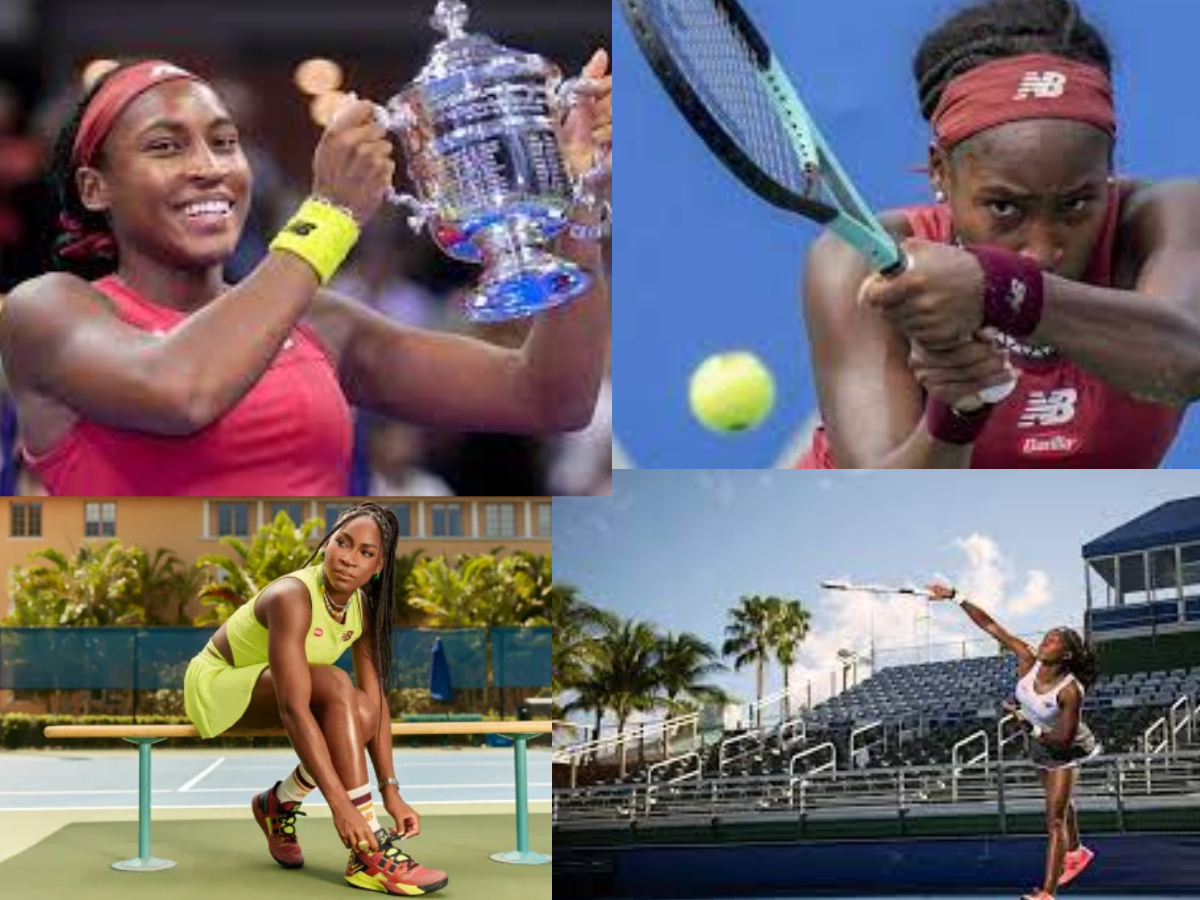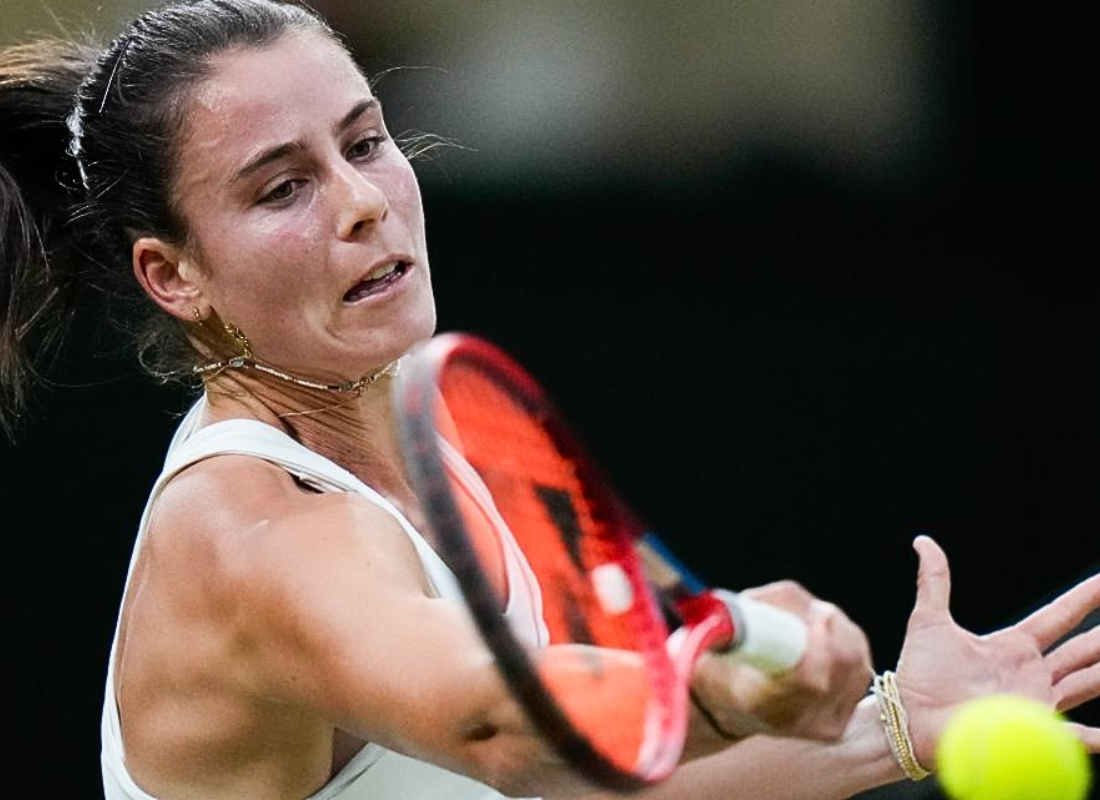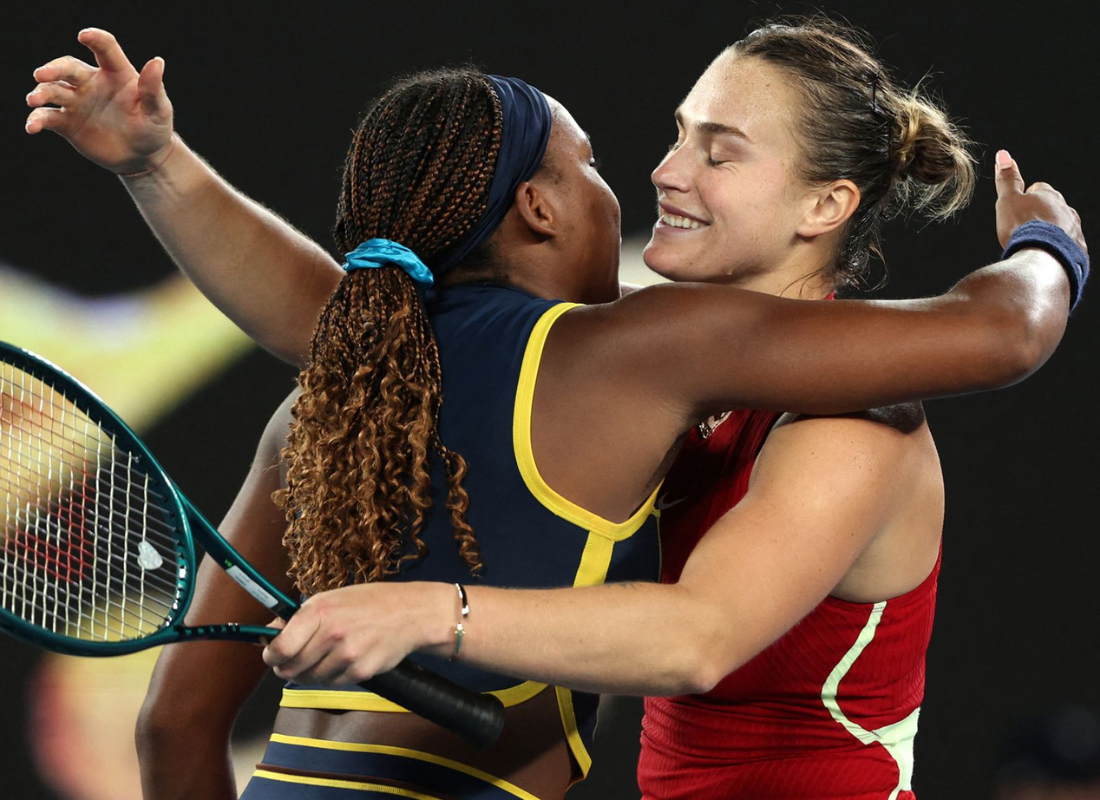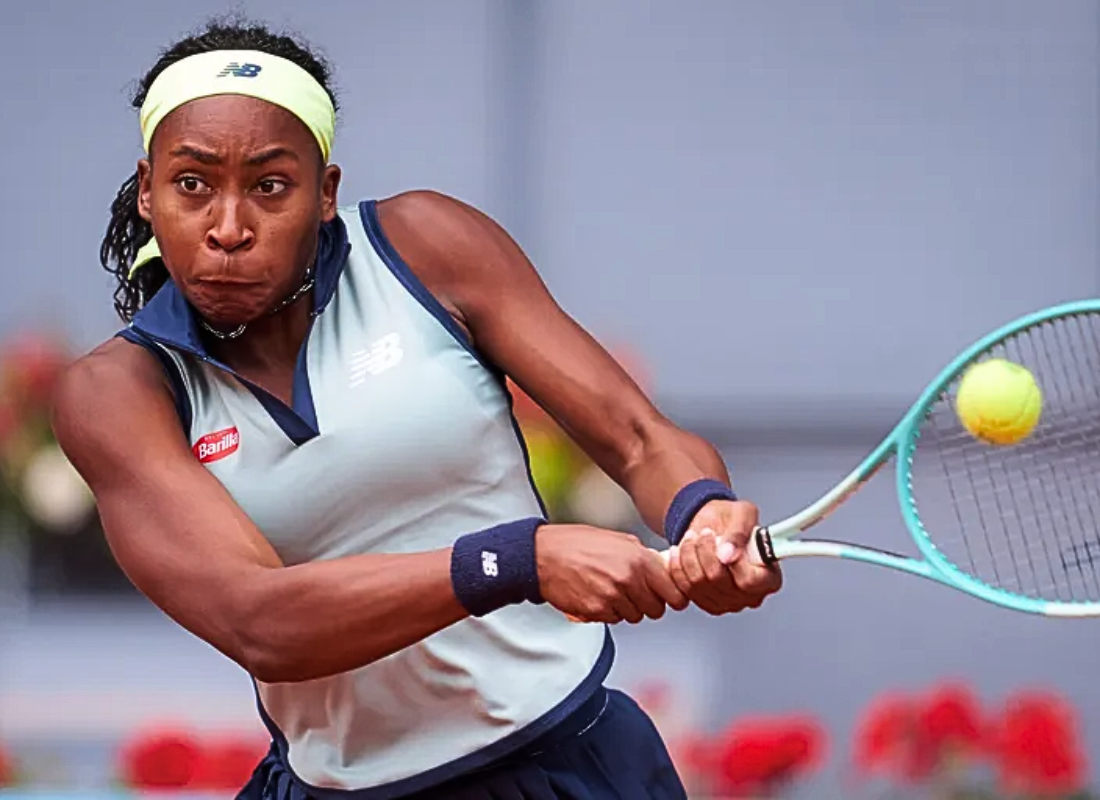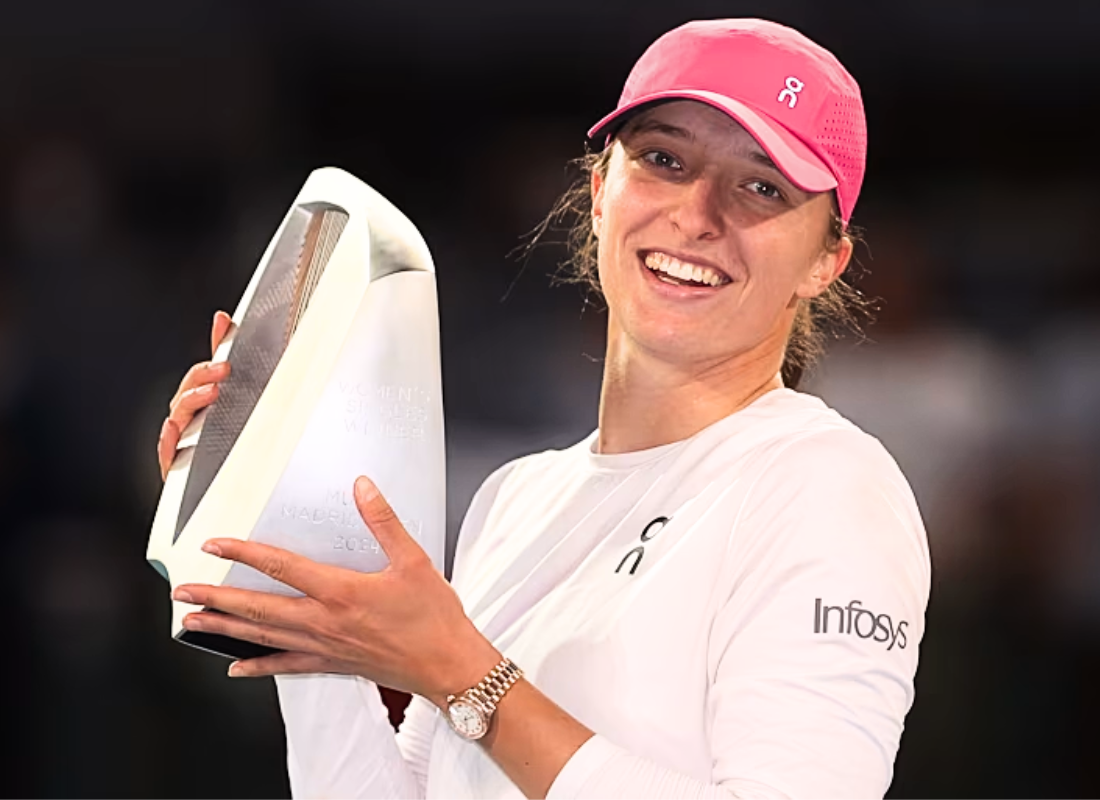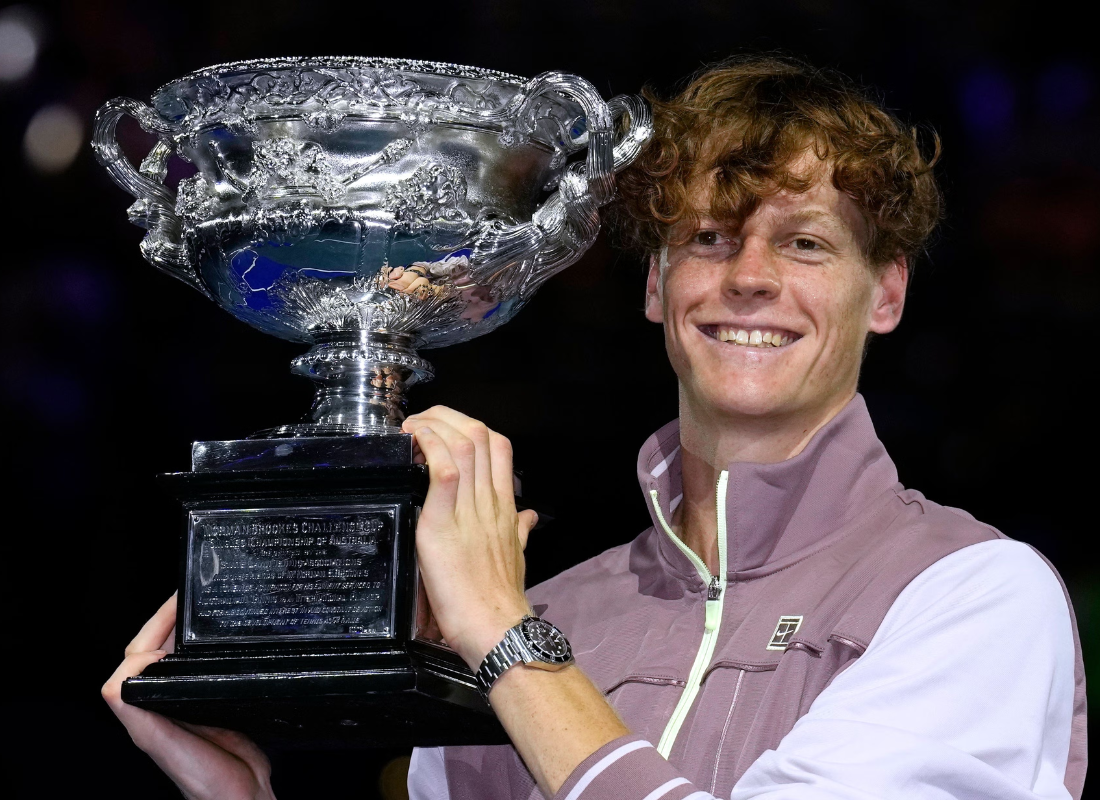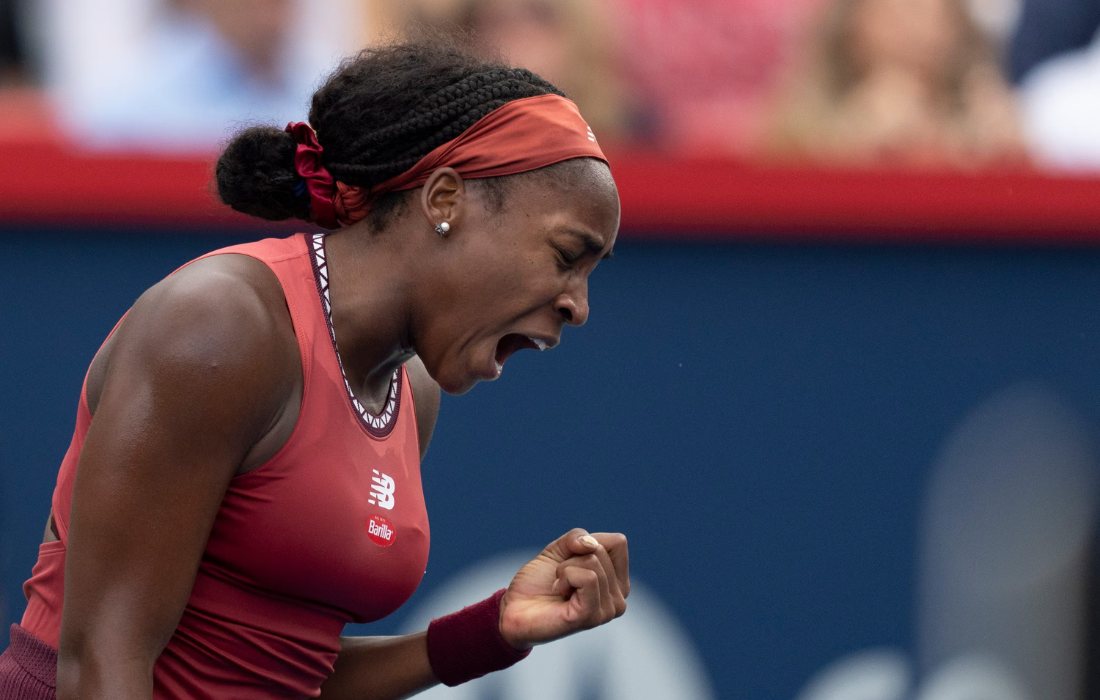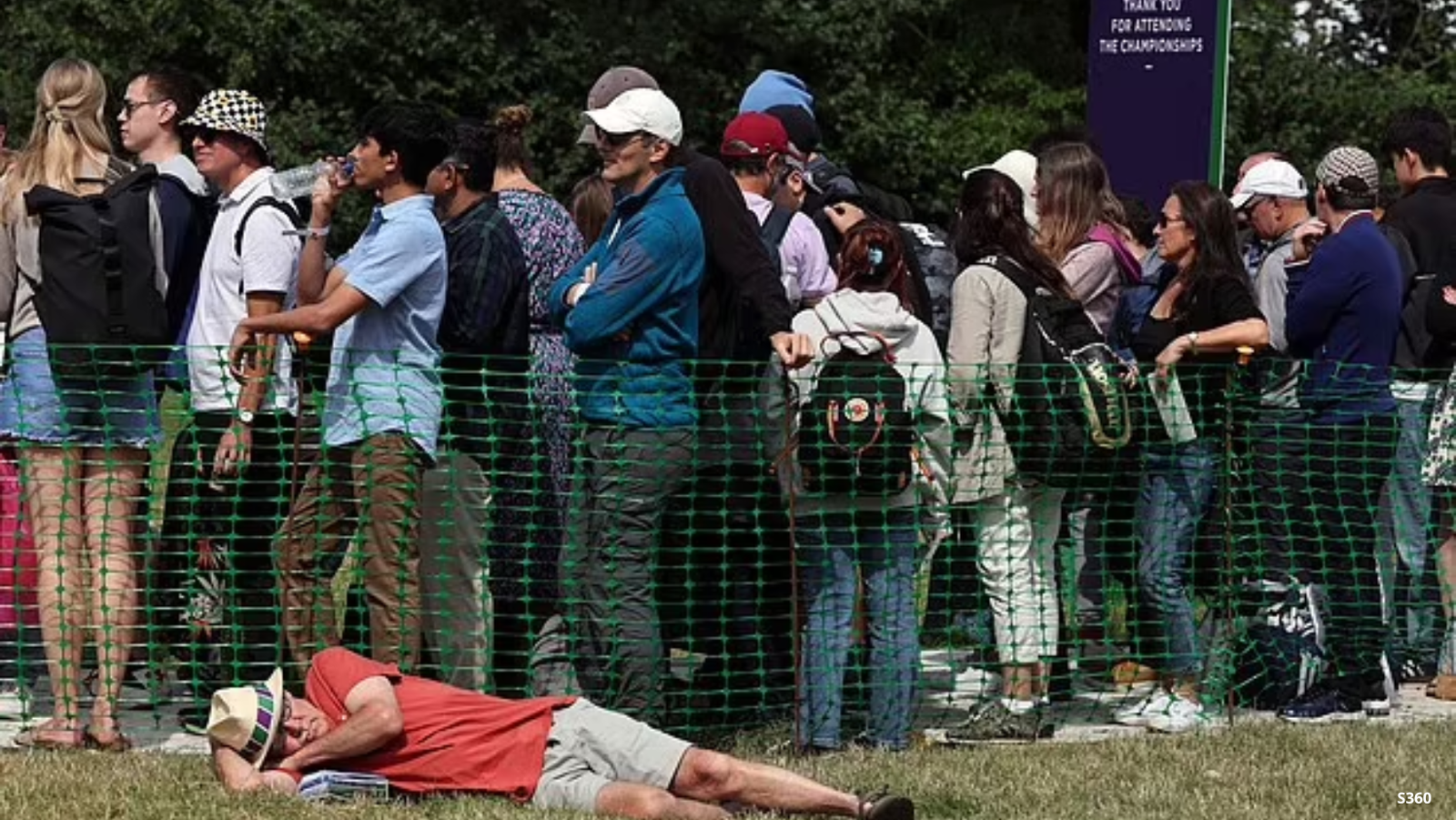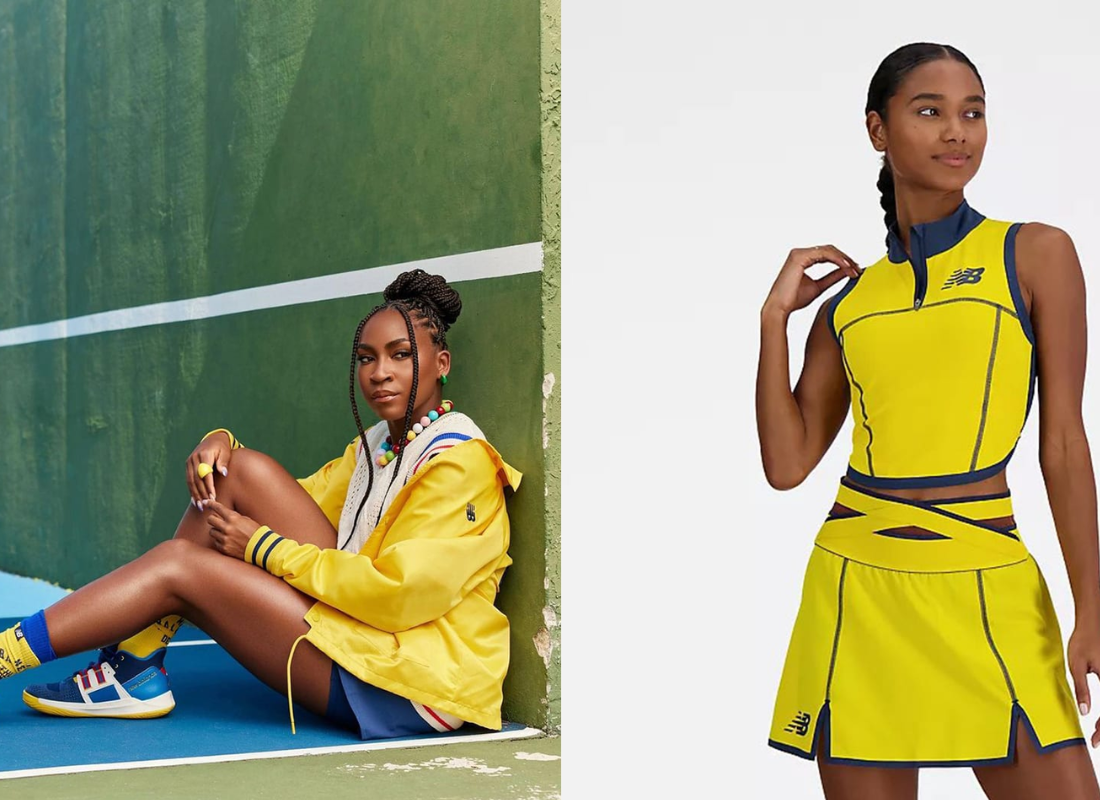Coco Gauff, representing the United States, stands a chance to clinch her inaugural Grand Slam championship with the backing of her local fans, while Aryna Sabalenka, on the verge of becoming the world’s top-ranked player, seeks her second major triumph this year. The pivotal question lingers: Who will triumph? We’ve sought the perspectives of our panel of experts to shed light on the matter.
How can Gauff secure a victory against Sabalenka?
Pam Shriver: To emerge triumphant against Sabalenka, Gauff should emphasize a robust defensive strategy, compelling Sabalenka into extended rallies. Gauff’s forehand needs to remain steadfast in the face of Sabalenka’s imposing power, particularly when Sabalenka targets Gauff’s forehand side.
Gauff should aim for at least one easy point per service game with her serves. Skillfully harnessing crowd support can also work to her advantage, and she should maintain her self-assuredness in her ability to win a major final, even if she’s not performing at her peak.
Cliff Drysdale: Gauff should stick to her defensive style, making the most of her exceptional speed, but she should also introduce a higher level of aggression compared to her prior two matches to prevent Sabalenka from dictating the entire match.
Alexandra Stevenson: Gauff should adhere to her customary practice routines, with a particular focus on honing her forehand. Her consistent speed has consistently proven to be a valuable asset for her.
Recognizing the importance of Brad Gilbert’s impact on Gauff’s development through his conventional coaching methods is fundamental. He doesn’t depend on modern analytics; instead, he relies on his keen observational abilities. He’s guided Gauff in understanding the concept of “unconventional tennis” and how to secure victories employing it.
As Gauff prepares for her upcoming match against Sabalenka, she’ll adopt a revised game plan, prioritizing the preservation of her agility and elevating her forehand to counter Sabalenka’s vulnerabilities with her far-western grip.
By maintaining her concentration, enhancing her forehand and mobility, she should position herself favorably for victory. Nonetheless, it’s vital not to underestimate the significance of her serve; she must consistently deliver a high percentage of successful first serves.
Rennae Stubbs: Gauff should leverage her speed to retrieve one additional shot proficiently. Utilize her forehand to direct the ball high towards Sabalenka’s forehand while ensuring it carries ample depth.
Alyssa Roenigk: Sabalenka essentially provided the solution during her post-semifinal press conference following her win against Madison Keys. To counter the formidable and aggressive 25-year-old, Gauff should continue to excel in her serving, maximize her speed, approach the game with a relaxed mindset, and approach it as if she has nothing to lose. Sabalenka acknowledged Gauff’s hunger and the crowd’s support, acknowledging her as a formidable adversary in the final.
Bill Connelly: So far, Gauff and Sabalenka have had a remarkably even series, with Gauff winning three out of their five encounters and securing seven out of 13 sets. Importantly, two of these matches went to a decisive third-set tiebreaker, providing a clear outline for Gauff’s path to victory.
In her three wins, Gauff consistently achieved a first-serve percentage of at least 64%. In contrast, her two losses were marked by lower first-serve percentages of 63% (resulting in a third-set tiebreaker loss in 2020) and 57% (leading to a straight-set defeat earlier this year at Indian Wells). Additionally, in two of her three wins, Gauff clinched victory by winning at least 57% of Sabalenka’s second-serve points.
This trend logically aligns with the game’s dynamics. When Sabalenka consistently delivers her formidable first serve, as she has improved in 2023, Gauff must respond with efficient service points of her own or seize every opportunity presented by Sabalenka’s second serve.
D’Arcy Maine: All the points raised by the previous commentators remain valid, especially the importance of Gauff’s serve and her proficiency in returning Sabalenka’s serves, which could be decisive in securing a win. Gauff must bring her top-level performance to the final match to withstand Sabalenka.
Notably, Gauff observed during Thursday night’s match that Sabalenka suffered a complete shutout in the first set against Keys. How did Keys achieve this? By capitalizing on Sabalenka’s errors, unleashing a continuous stream of winners, and harnessing the momentum and energy from the spirited crowd.
While Keys ultimately couldn’t withstand Sabalenka’s incredible comeback, the match itself, along with Keys’ dominant first set, may provide valuable insights for Gauff and her team.
How can Sabalenka secure a victory against Gauff? Shriver: Sabalenka possesses the sheer power to target Gauff’s forehand and disrupt her recently improved forehand game. However, Gauff has shown vulnerability in crucial moments, as evident in her semifinal against Karolina Muchova. Sabalenka shouldn’t panic when Gauff prolongs rallies with multiple balls in play. She needs to enter Ashe Stadium for the final with the awareness that the crowd will overwhelmingly support Coco Gauff, displaying minimal emotion.
Sabalenka might find it beneficial to study the last six games of Bianca Andreescu’s 2019 final win over Serena Williams and Ajla Tomljanovic’s three-set victory over Williams in Williams’ final match last year. Both instances saw non-American women triumph on Ashe with an American as the crowd favorite.
Sabalenka boasts a robust support team, and she can draw energy and encouragement from them to counterbalance the disparity in crowd support. She should also reflect on how she clinched the Australian Open title earlier this year by delivering clutch power tennis and believe that she can replicate that success in a major final.
Drysdale: Sabalenka should adhere to the tactics that have brought her to this stage—utilize her potent groundstrokes following a dominant serve.
Stevenson: Sabalenka needs to consider various factors, including scrutinizing her serving mechanics, especially after inconsistencies against Keys. Additionally, she’s grappling with the mental pressure associated with ascending to No. 1. She must effectively navigate the court and employ her newfound net skills to disrupt Gauff’s game.
Stubbs: Focus on targeting Gauff’s forehand and hitting the ball flat enough to elicit a short ball, then capitalize on open-court opportunities.
Luke Jensen: Strive to deliver winners past the fastest player in women’s tennis.
Roenigk: Sabalenka won’t succeed by replicating her performance against Keys. If she begins flat and loses the first set convincingly, Gauff is unlikely to let her back into the match. Gauff now possesses the belief that she can triumph in critical moments, a characteristic she previously lacked. For Sabalenka to secure her second major title, she must challenge Gauff’s self-assurance, ideally early in the match. She should target Gauff’s forehand, shorten points, and force her into making mistakes.
Connelly: When you’re on the verge of becoming the world No. 1, the key to victory typically revolves around “playing your game.” Sabalenka’s resounding 6-4, 6-0 win over Gauff at Indian Wells, the most decisive victory in their series, showcased a Sabalenka masterclass. She delivered aces on 12% of her serves, maintained a first-serve percentage of 73%, and avoided double faults.
Moreover, she won a higher percentage of first-serve return points (43%) against Gauff than ever before. Although Gauff faced challenges against top-10 players between October and May, losing seven out of eight matches, her performance is expected to be stronger now. Nevertheless, when Sabalenka consistently lands her powerful first serve and plays aggressively, she becomes the favorite against nearly anyone, even a strong defender like Gauff.
Maine: While I’m not a psychologist, it’s reasonable to assume that Sabalenka will enter this match with heightened confidence following her remarkable comeback win against Keys. Her self-belief, combined with the understanding that a match remains in play until the final point, as well as her experience of winning the Australian Open in January, will aid her in managing the emotional aspects of the final.
As Alyssa pointed out, Sabalenka must begin the match prepared to compete and avoid a flat start, as seen in her previous match. With the right mindset and performance, she stands a solid chance of securing her second major title.
How can Sabalenka secure a victory against Gauff?
Shriver: Sabalenka possesses the sheer power to target Gauff’s forehand and disrupt her recently improved forehand game. However, Gauff has shown vulnerability in crucial moments, as evident in her semifinal against Karolina Muchova.
Sabalenka shouldn’t panic when Gauff prolongs rallies with multiple balls in play. She needs to enter Ashe Stadium for the final with the awareness that the crowd will overwhelmingly support Coco Gauff, displaying minimal emotion. Sabalenka might find it beneficial to study the last six games of Bianca Andreescu’s 2019 final win over Serena Williams and Ajla Tomljanovic’s three-set victory over Williams in Williams’ final match last year. Both instances saw non-American women triumph on Ashe with an American as the crowd favorite.
Sabalenka boasts a robust support team, and she can draw energy and encouragement from them to counterbalance the disparity in crowd support. She should also reflect on how she clinched the Australian Open title earlier this year by delivering clutch power tennis and believe that she can replicate that success in a major final.
Drysdale: Sabalenka should adhere to the tactics that have brought her to this stage—utilize her potent groundstrokes following a dominant serve.
Stevenson: Sabalenka needs to consider various factors, including scrutinizing her serving mechanics, especially after inconsistencies against Keys. Additionally, she’s grappling with the mental pressure associated with ascending to No. 1. She must effectively navigate the court and employ her newfound net skills to disrupt Gauff’s game.
Stubbs: Focus on targeting Gauff’s forehand and hitting the ball flat enough to elicit a short ball, then capitalize on open-court opportunities.
Luke Jensen: Strive to deliver winners past the fastest player in women’s tennis.
Roenigk: Sabalenka won’t succeed by replicating her performance against Keys. If she begins flat and loses the first set convincingly, Gauff is unlikely to let her back into the match. Gauff now possesses the belief that she can triumph in critical moments, a characteristic she previously lacked. For Sabalenka to secure her second major title, she must challenge Gauff’s self-assurance, ideally early in the match. She should target Gauff’s forehand, shorten points, and force her into making mistakes.
Connelly: When you’re on the verge of becoming the world No. 1, the key to victory typically revolves around “playing your game.” Sabalenka’s resounding 6-4, 6-0 win over Gauff at Indian Wells, the most decisive victory in their series, showcased a Sabalenka masterclass. She delivered aces on 12% of her serves, maintained a first-serve percentage of 73%, and avoided double faults.
Moreover, she won a higher percentage of first-serve return points (43%) against Gauff than ever before. Although Gauff faced challenges against top-10 players between October and May, losing seven out of eight matches, her performance is expected to be stronger now. Nevertheless, when Sabalenka consistently lands her powerful first serve and plays aggressively, she becomes the favorite against nearly anyone, even a strong defender like Gauff.
Maine: While I’m not a psychologist, it’s reasonable to assume that Sabalenka will enter this match with heightened confidence following her remarkable comeback win against Keys. Her self-belief, combined with the understanding that a match remains in play until the final point, as well as her experience of winning the Australian Open in January, will aid her in managing the emotional aspects of the final.
As Alyssa pointed out, Sabalenka must begin the match prepared to compete and avoid a flat start, as seen in her previous match. With the right mindset and performance, she stands a solid chance of securing her second major title.
Who will come out on top?
WTA Tennis plays
— TennisWinnersOnly (@TennisWinnersO1) September 9, 2023
(2U) Sabalenka ML vs Gauff (-116)
(1U) Sabalenka/Gauff O2.5 sets (+135)
10-4 run in WTA🍀
Let’s end on a high note💪
Like if tailing along👍#GamblingTwitter pic.twitter.com/hn1skQ9noA
Drysdale: Sabalenka, in three sets.
Stevenson: I’m staying with Gauff, even though choosing a female player in today’s highly competitive field requires thorough consideration of her mental and physical condition on match day. Unlike her peers, Gauff doesn’t burden herself with excessive pressure. She has demonstrated her capacity to adapt and escape challenging situations.
Stubbs: Sabalenka. Her overwhelming power is likely to pose too great a challenge for Gauff, and her experience will be a critical factor.
Jensen: Gauff in straight sets. Under the guidance of her new coach, Brad Gilbert, Gauff has embraced her tactical identity and possesses a winning mindset—a winning combination!
Roenigk: This summer belongs to Gauff. While Sabalenka may ascend to the No. 1 ranking after this match, Gauff is riding an 11-match winning streak, has already clinched two titles this summer, and holds more hard-court victories than any other woman in the world this year. It’s evident that she’s on a path toward destiny. Gauff wasn’t destined to secure her first Grand Slam title at Roland Garros; it was always meant to happen in New York, for those who believe in such things.
Connelly: To be honest, I usually lean toward picking the favorite because I’m a bit predictable that way. However, this match presents a unique situation where there’s hardly a clear favorite. Caesars gives Sabalenka only a slight edge, and Tennis Abstract gives her a 51% chance of winning. Considering Gauff’s slight overall advantage in their head-to-head series, it’s essentially a coin toss.
So, in such cases, I search for intangible factors, and currently, Gauff’s vibes are through the roof. She has won 17 of her last 18 matches since Wimbledon, including five victories against top-10 players. She’s even casually dropping anime references in post-match interviews. The crowd is firmly in her corner. She has conquered the French Open champion (Iga Swiatek) and Wimbledon champion (Marketa Vondrousova), as well as the French Open finalist (Karolina Muchova) twice. In her last two rounds, she’s lost a mere 11 games.
To be frank, she’s been the world’s best player over the past two months. While a Sabalenka victory wouldn’t be a shock, I’ll go with Gauff.
Maine: This match possesses all the ingredients for an instant classic between two of the game’s current elite players. What I firmly believe is that it will be an intensely competitive match filled with compelling drama for all the right reasons. Numerous arguments could be made for both players, but my wager is on Coco Gauff. With the backing of the New York crowd and her outstanding performance on hard courts throughout the summer, it seems like the perfect moment for her to capture her first Grand Slam title.
ALSO READ:
- Coco Gauff emerges as a Tennis sensation, transcending sports
- Coco Gauff Dominates in Opening Match
- Djokovic’s Marathon Win at Australian Open 2024


